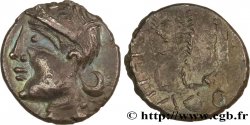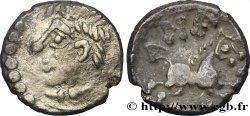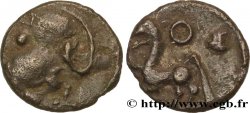bga_175457 - EDUENS, ÆDUI (BIBRACTE, Area of the Mont-Beuvray) Denier à la tête casquée, fourré
Not available.
Item sold on our e-shop
Price : 65.00 €
Item sold on our e-shop
Price : 65.00 €
Type : Denier à la tête casquée, fourré
Date: c. 80-50 AC.
Mint name / Town : Autun (71)
Metal : silver
Diameter : 13,5 mm
Orientation dies : 12 h.
Weight : 1,4 g.
Coments on the condition:
Flan court et ovale, avec le portrait exactement ajusté à la taille du flan. Revers avec des piqures de métal au niveau du bronze qui ressort de la pellicule d’argent
Catalogue references :
Obverse
Obverse legend : ANÉPIGRAPHE.
Obverse description : Tête casquée à gauche ; derrière, croix formée de quatre globules ; grènetis.
Reverse
Reverse legend : ANÉPIGRAPHE.
Reverse description : Cheval libre galopant à gauche ; un annelet pointé au-dessus et un autre entre les jambes ; un timon devant.
Commentary
Pour le revers, il existe de nombreuses combinaisons, selon qu'il y a une rouelle, un annelet ou un annelet pointé de part et d'autre du cheval. Le classement du Nouvel Atlas distingue deux classes, selon que la base du cou est décorée (classe I) ou que l’effigie est stylisée (classe II). La troisième classe est à ignorer ; le critère du torque sous l’annelet entre les jambes du cheval peut être systématique, mais il est quasi systématiquement hors flan... il est en bord de flan sur la monnaie DT. 3189 pourtant de la classe II !.








 Report a mistake
Report a mistake Print the page
Print the page Share my selection
Share my selection Ask a question
Ask a question Consign / sell
Consign / sell
 Full data
Full data









